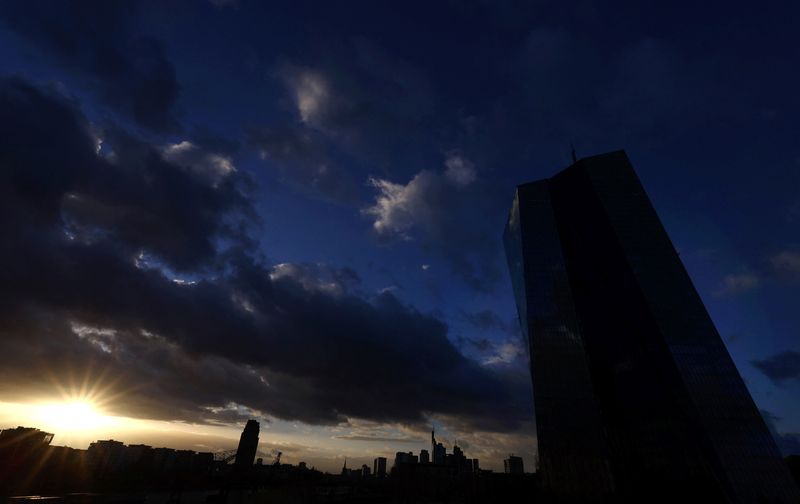By Balazs Koranyi and Francesco Canepa
FRANKFURT (Reuters) - The European Central Bank's tough talk on Thursday may not have convinced investors hoping for an early end to rate hikes, but ECB policymakers largely agree on how much more is needed to tame inflation, six of them said.
The central bank for the 20 countries that share the euro has raised interest rates by a combined 3 percentage points since July, the most in its history, and on Thursday promised another big move in March.
Yet markets still pared bets on further rate hikes overnight, interpreting the bank's lack of guidance on subsequent moves as evidence its commitment to fighting inflation is waning.
A similar disconnect can be seen in the United States, where markets are pricing in rate cuts this year despite Federal Reserve chair Jerome Powell saying he does not see this happening.
But on- and off-record conversations with half a dozen policymakers suggest the ECB's 26-member Governing Council is more united on the need for further rate increases than markets perceive, and differences on the final destination mostly small.
There appears to be little or no disagreement that rates will rise again in May after hitting 3% in March, taking the deposit rate to at least 3.25% but possibly 3.5%. The central bank governors of Belgium, Slovakia and Lithuania publicly backed such a step, while others advocated it privately.
"The March rate hike is not the last one," Lithuania's Gediminas Šimkus said. "It could be 50 basis points in (May) or 25, but hardly 75."
For now, there appears to be little appetite to go much further beyond that.
Several hawkish policymakers who spoke on condition of anonymity said they were comfortable with the 3.5% peak rate financial markets had priced in before Thursday's meeting.
That would put the gap between policy hawks and doves at just 25 basis points - a small margin considering the deposit rate was minus 0.5% when the ECB started hiking, so that a move to 3.5% would represent a rapid shift of 400 basis points.
PEAK IN SIGHT
The caveat is that sticky underlying inflation, which excludes volatile food and energy prices, could alter views and push rate hike expectations higher.
"If core remains persistent, if we keep seeing core momentum being close to 5%, for me a terminal rate of 3.5% would be a minimum," Belgian central bank chief Pierre Wunsch told Reuters, arguing that rate moves to 4% or above in the United States and Britain could be seen as reference points for the ECB.
On Thursday, ECB President Christine Lagarde cited high core inflation to explain why "we have more ground to cover and we are not done". Underlying inflation has been hovering above 5% in recent months, even as overall inflation is declining fast because of falling energy prices and base effects.
If push comes to shove, conservative policymakers seem to have a clear numerical advantage.
Most swing voters now see a greater risk in doing too little than doing too much, the sources said, and have sided with the hawkish camp, as evidenced by the clear majority for Thursday's moves and the relative ease with which they were agreed.
Investors and economists have also focused on a peak in the deposit rate of between 3.25% and 3.5%, which suggests just one or two moves after the March hike and an end by mid-year.
"In the grand scheme of things, we can be relatively confident about a terminal rate of 3.25%-3.50%," UBS economist Reinhard Cluse said.
He said the Bank of England is likely to have stopped raising rates by June, while the Federal Reserve may be getting there, with the U.S. economy shrinking.

"We'll have external weakness creeping into the European economy so we'll be at a point where the ECB can say 'we have done enough'," Cluse added.
Economists at Deutsche Bank (ETR:DBKGn), BNP Paribas (OTC:BNPQY), Morgan Stanley (NYSE:MS), JPMorgan (NYSE:JPM) all see the terminal rate at 3.25% while Goldman Sachs (NYSE:GS) Asset Management sees it at 3.5% and Societe Generale (OTC:SCGLY) at 3.75%.